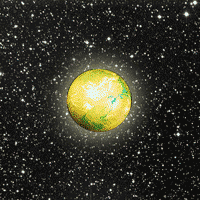Our modern understanding of the interior and behaviors of the Earth is strongly based around plate tectonics and the concept of subduction. But before this idea was widely accepted in the late 20th century, a good number of scientists subscribed to the much more fantastical theory that the Earth was forever increasing in volume. The expanding Earth hypothesis stated that phenomena like underwater mountain ranges and continental drift could be explained by the fact that the planet was gradually growing larger. As the globe’s size grew, proponents argued, the distances between continents would increase, as would the Earth’s crust, which would have explained the creation of new mountains. The theory has a long and storied past, beginning with Darwin, who briefly tinkered with it before casting it aside, and Nikola Tesla, who compared the process to that of the expansion of a dying star.
How it was Proven Wrong:
The expanding Earth hypothesis has never been proven wrong exactly, but it has been widely replaced with the much more sophisticated theory of plate tectonics. While the expanding Earth theory holds that all land masses were once connected, and that oceans and mountains were only created as a result of the planet’s growing volume, plate tectonics explains the same phenomena by way of plates in the lithosphere that move and converge beneath the Earth’s surface.

No comments:
Post a Comment